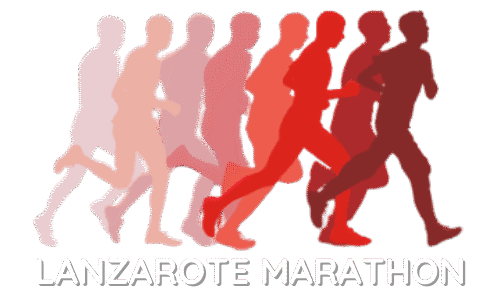
The Importance of Rest Days in a Marathon Training Plan: Enhancing Recovery and Performance
In marathon training, rest days are not merely a break from running; they are a crucial component of an effective training plan. Incorporating regular rest days allows the body to recover, rebuild muscle, and prevent injury, which ultimately enhances overall performance. Without adequate rest, even the most dedicated runners risk burnout, fatigue, or overuse injuries that can derail their training.
Many athletes mistakenly view rest as a sign of weakness, but research shows that proper recovery improves endurance, strength, and mental focus. Integrating these days into a training schedule creates a balanced approach, enabling runners to reach their full potential without compromising their health.
Understanding the role of rest days can transform a marathon training plan from a gruelling process into a progressive journey. With consistent recovery time, runners can maintain their enthusiasm and steadily build their fitness, ensuring they are prepared for race day.
The Role of Rest Days in Marathon Training
In marathon training, rest days play a crucial role in ensuring that runners can perform at their best, recover effectively, and avoid injuries. These days are designed to enhance adaptation and support overall training consistency.
Why Rest Days Matter
Rest days are essential as they allow the body to recover from physical exertion. Training for a marathon imposes significant stress on muscles and joints. Without adequate rest, athletes risk overtraining, leading to fatigue and diminished performance.
Incorporating rest days into a training plan aids in mental recovery, preventing burnout. Runners often find that regular breaks enhance their motivation and enjoyment of the training process. Thus, balancing rest and activity is key to long-term success in marathon training.
How Rest Supports Recovery and Performance
During rest days, the body engages in repair processes that are vital for performance improvement. Muscle fibres that endure micro-tears during workouts are rebuilt stronger, helping to increase endurance and speed. Additionally, glycogen stores are replenished, which is crucial for sustained energy levels during runs.
Rest also helps mitigate inflammation and soreness that can occur after intense training sessions. This reduction in muscle soreness allows for a quicker turnaround time between training sessions. Ultimately, regular rest days contribute significantly to an athlete’s ability to train effectively without increasing the risk of injury.
Physiological Benefits of Rest
Physiological benefits of rest include improved hormonal balance, particularly cortisol and testosterone levels. These hormones are vital for recovery and muscle building. Adequate rest can also enhance immune function, reducing the likelihood of illness that could disrupt training.
In essence, rest days enable better adaptation to training loads, making the body more resilient. This resilience is crucial for avoiding injuries that can derail marathon training plans. By prioritising rest, athletes ensure that their bodies are prepared for the challenges of marathon running.
Optimal Integration of Rest Days Within a Training Schedule
Rest days are essential for ensuring long-term consistency in marathon training. Effective integration of these days allows runners to recover from fatigue, helps prevent burnout, and optimises performance.
Planning Rest Days in Your Marathon Training Plan
When planning a marathon training schedule, it is crucial to strategically place rest days. A common approach is to include rest after long runs or intense training sessions. For instance, a typical week might feature long runs on Saturdays and follow that with a rest day on Sunday.
Additionally, athletes can incorporate a week of reduced mileage every three to four weeks, allowing time for recovery while maintaining fitness. This structured approach prevents physical and mental fatigue while keeping runners engaged.
Types of Rest: Passive Rest vs Active Recovery
Runners can choose between two main types of rest: passive rest and active recovery.
Passive rest involves complete cessation from running, focusing solely on recovery. Examples include relaxing at home, engaging in light stretching, or receiving a sports massage. This allows the body to heal and adapt without any strain.
Active recovery, on the other hand, consists of low-impact activities that promote blood flow without overexertion. Activities such as walking, gentle cycling, or light yoga can help maintain mobility while fostering recovery. Incorporating both types in a training plan can enhance overall performance and well-being.
Listening to Your Body and Preventing Burnout
A critical component of successfully integrating rest days is the ability to listen to one’s body. Runners should closely monitor signs of fatigue, such as persistent soreness or decreased motivation. Identifying these signals early can prevent burnout and injury.
Adjusting the training schedule based on how one feels is important. If fatigue sets in, adding an extra rest day or incorporating an easy recovery run may be beneficial. Flexibility in the plan ensures that runners can maintain consistency while prioritising their health.
Rest Days and Injury Prevention
Rest days play a crucial role in minimising the risk of injuries and aiding in recovery during marathon training. By incorporating adequate rest, runners can protect themselves from overuse injuries and facilitate the healing of sore muscles.
Reducing the Risk of Overuse Injuries
Overuse injuries arise from repetitive stress on muscles and joints, commonly affecting marathon runners. Incorporating rest days within a training plan allows the body to recover and repair.
Common overuse injuries include:
- Stress fractures: Tiny cracks in bones caused by repetitive force.
- Plantar fasciitis: Inflammation of the tissue at the bottom of the foot, often from excessive training.
- Shin splints: Pain along the shin bone due to inflammation of connective tissues.
Taking time off allows runners to refresh their muscles and tissues, reducing the likelihood of encountering these issues. Regular rest can enhance performance and endurance by preventing fatigue-related breakdowns.
Managing Soreness and Recovery from Long Runs
Long runs often lead to muscle soreness, which is a natural part of training. Rest days are essential for managing this soreness and promoting recovery.
Incorporating gentle stretching and low-impact activities on rest days can enhance blood flow to sore muscles. This accelerates the healing process.
Effective recovery strategies include:
- Active recovery runs: Easy, short runs can help maintain fitness without putting undue stress on the body.
- Hydration and nutrition: Proper intake of fluids and nutrients supports muscle recovery.
Runners can experience improved performance and less discomfort during subsequent workouts by allowing sufficient recovery time after long runs.
Supportive Practices to Enhance Rest and Recovery
Incorporating specific practices into a marathon training plan can significantly enhance rest and recovery. Key aspects to consider include cross-training, proper nutrition, hydration, sleep, along with strength training and stretching.
Cross-Training and Low-Impact Activities
Cross-training offers runners a way to maintain fitness while reducing the risk of injury. Activities like swimming, cycling, and hiking provide cardiovascular benefits without the impact stress of running.
- Swimming: Excellent for building endurance while providing a full-body workout.
- Cycling: Engages different muscle groups, aiding in recovery.
- Yoga: Enhances flexibility and mental focus, promoting relaxation.
Including these activities in the training schedule ensures a balanced approach, allowing muscles to recover while still being active.
The Importance of Nutrition, Hydration, and Sleep
Nutrition plays a critical role in recovery. Consuming a balanced diet rich in carbohydrates, proteins, and healthy fats helps replenish energy stores.
- Hydration: Ensuring adequate fluid intake is essential for recovery. Dehydration can lead to fatigue and hinder performance.
- Fueling: Consuming snacks with carbs and protein after workouts helps repair muscle tissue.
Sleep is equally vital. Quality sleep supports muscle recovery and helps to maintain cardiovascular and metabolic health. Aim for 7-9 hours per night.
Strength Training and Flexibility for Runners
Incorporating strength training into a runner’s routine enhances muscle endurance and stability. Key exercises should focus on the core, hips, and legs to improve running form.
- Core Exercises: Planks and bridges support spinal alignment and stability.
- Leg Workouts: Squats and lunges build strength and resilience.
Flexibility through stretching is also important. Regular stretching reduces the risk of injuries and improves range of motion, contributing to better running performance. Incorporating these elements fosters a comprehensive recovery approach.
